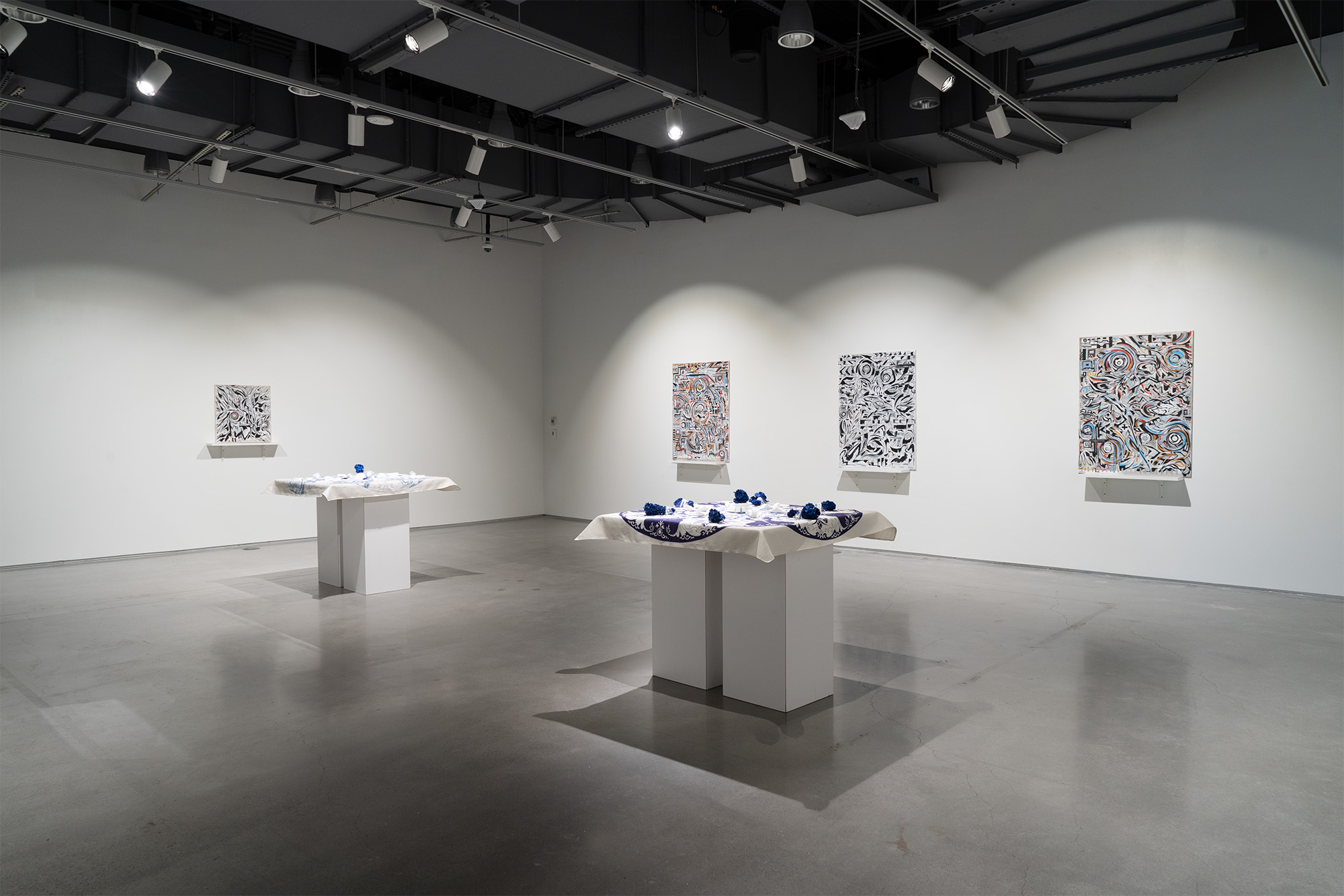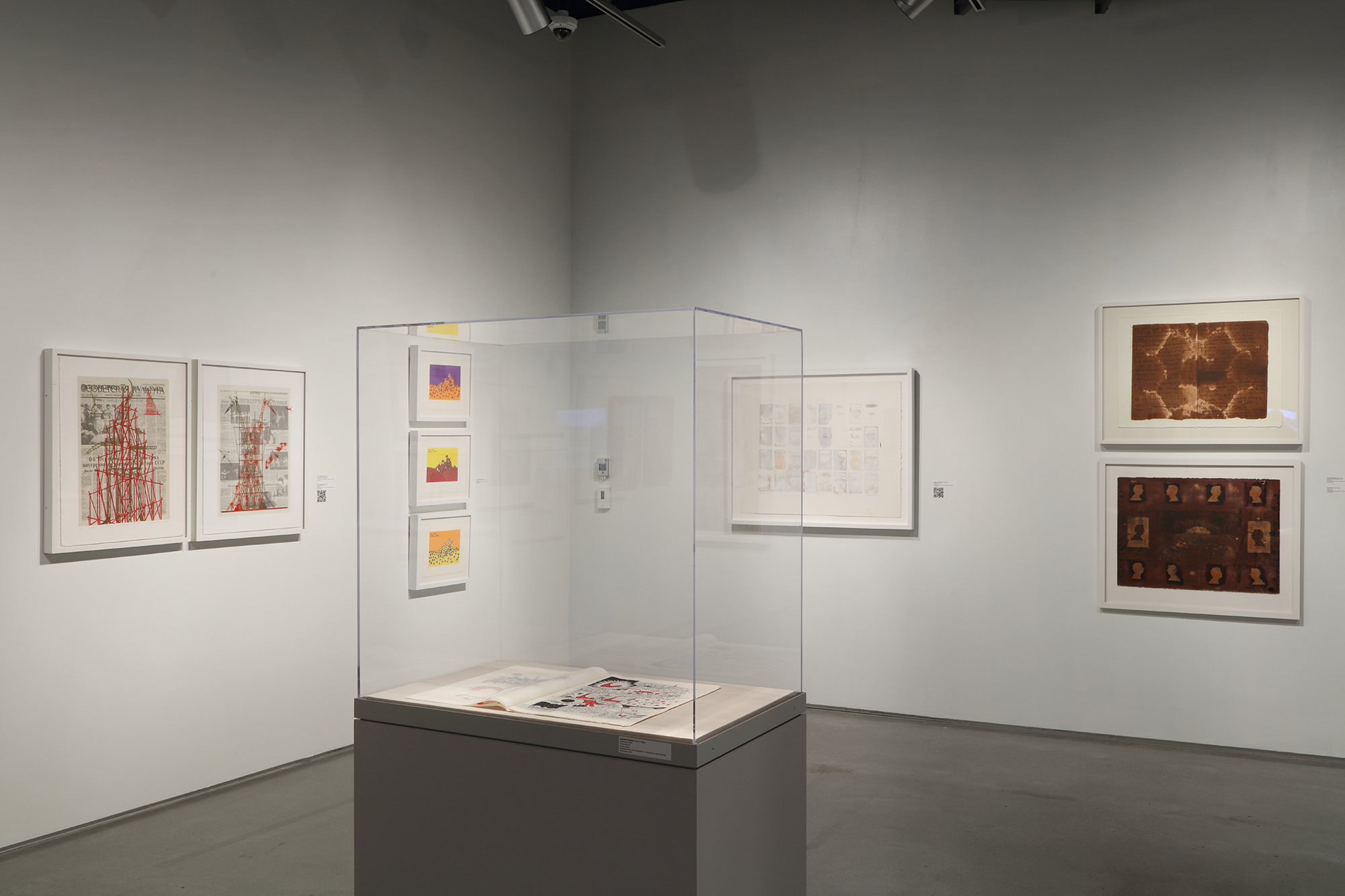Upcoming Exhibitions for Summer 2026
Windgate Artists-in-Residence Exhibition: Jennifer Angus and LaKela Brown
June 9 - July 24, 2026
Don Russell Clayton Gallery
Malinda Jolley Mortin Gallery
Curated by Cynthia Nourse Thompson

Image credit: Installation of the Windgate Artists-in-Residence: Annet Couwenberg and Matthew Kirk.
The Zuckerman Museum of Art is pleased to present the work of Jennifer Angus who served as the Fall 2025 Windgate Artists-in-Residence, and LaKela Brown who served as the Spring 2026 Windgate Artist-in-Residence. Artwork created by the artists during their residency is featured in a summer exhibition at the Zuckerman Museum of Art. Additionally, one artwork from each artist will become part of the Zuckerman Museum of Art permanent collection and will be utilized as a teaching tool to further learning engagement and cultural enrichment opportunities across the KSU campus. The 2026 Windgate Artist-in-Residence exhibition was curated by Cynthia Nourse Thompson.
The School of Art and Design at Kennesaw State University is grateful to the Windgate Foundation for choosing to invest in the future of our students. The Foundation’s vision and contribution enabled KSU to develop the Windgate Foundation Artist Residency Program. This program is instrumental in providing our students with an experience of working with visiting professional artists in their field of study and growing as industry leaders. For six semesters through 2024, grant proceeds will be used to host professional artists at KSU, supporting the shared goals of the Windgate Foundation and the School of Art and Design to advance contemporary craft and strengthen visual arts education. KSU is fortunate to be able to offer students unique artist-in-resident experiences of this magnitude as part of their scheduled curriculum. The generous gift from the Windgate Foundation enables KSU to host internationally known artists to lead and inspire students through art-making and to share that art and inspiration with the community at large. Through the Foundation’s continued support of the School of Art and Design, we can offer the highest level of artistic excellence and quality to our students, community, and visiting artists.
-
About Jennifer Angus
Jennifer Angus is a professor in the Design Studies Department at the University of Wisconsin -Madison where she teaches textile design, specifically, everything to do with the dyeing and printing of cloth, including natural dyes. She is an artist described by Art Daily as “one of the top contemporary installation artists in the country.” Jennifer creates some of the most provocative work most people have ever seen in an art museum setting. She composes patterns using hundreds of insects, placing them in arrangements that suggest wallpaper and textiles. Angus was one of nine leading contemporary artists selected for the landmark exhibition Wonder at the Smithsonian’s Renwick Gallery in 2015.
Jennifer has been the recipient of numerous awards including Canada Council, Ontario Arts Council and Wisconsin Arts Board grants. More recently she received the inaugural Forward Art Prize, an unrestricted award for outstanding women artists of Wisconsin. At the University of Wisconsin-Madison she has received annual grants from the Graduate School, as well as the Vilas Associate Award, the Emily Mead Baldwin-Bascom Professorship in the Creative Arts, the Romnes Fellowship, the UW Arts Institute Creative Arts Award, Rothermel Bascom Professorship, the Kellett Mid-Career Faculty Researcher Award and most recently the Edna Wiechers Arts in Wisconsin Award. In 2013, Albert Whitman and Company, Chicago, published her first novel, In Search of Goliathus Hercules.
At the University of Wisconsin – Madison she is the faculty leader of the Global Artisans Initiative which launched an interdisciplinary outreach program that connects students with artisans who have requested assistance with microenterprise development. The program leverages the relationships that University of Wisconsin has built over many years at global health field course sites in Ecuador, India, Kenya Mexico, Nepal and Vietnam to create a product design and marketplace system to support the economic wellbeing of local artisans.
-
About LaKela Brown
Brown received a BFA in 2005 from the College for Creative Studies in Detroit. Her sculptural relief works evoke ancient art forms such as hieroglyphic wall carvings or cuneiform relief tablets, with imagery that references 1990s hip-hop culture. Door-knocker hoop earrings are posed as celebratory symbols of female empowerment and maturity; embedded in other works are rope chain necklaces, gold-capped teeth, and chicken heads. Brown's pieces are presented as artifacts from another era that have been discovered and placed on display for an examination that is as much anthropological as aesthetic. Plaster relief slabs are installed alongside their bas-relief counterparts, and in some instances three-dimensional cast sculptures are placed alongside their molds. By hearkening back to ancient Greco-Roman methods of mark making, Brown presents a meditation on how objects are historicized, represented, and abstracted in a museological context.
LaKela’s work is featured in the collections of museums nationwide, including the Museum of Fine Arts, Boston, The Mint Museum, Charlotte, The Detroit Institute of Arts, Detroit, the Smart Museum of Art, Chicago, and the The Studio Museum in Harlem, New York.








